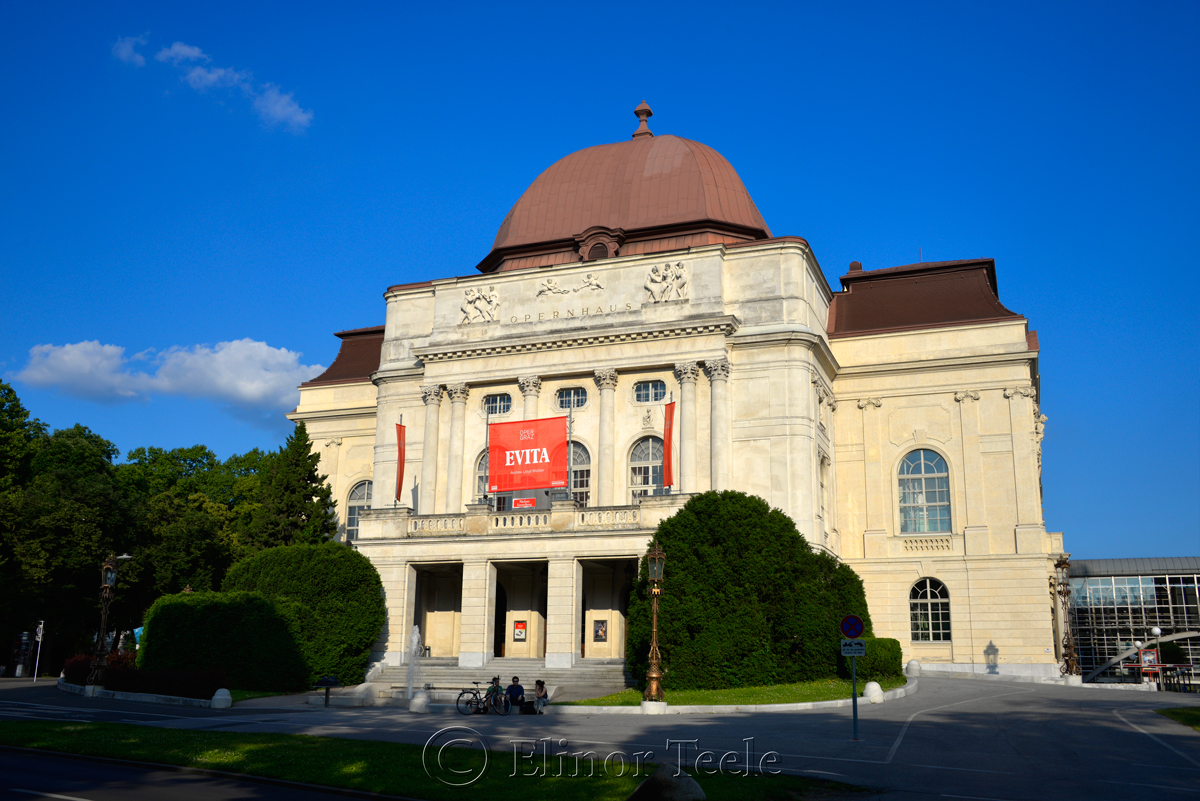Like the Hungarian State Opera House, Graz’s Opernhaus (“Opera House”) was built at the tail end of the 19th century – a time when the strains of the Blue Danube saturated every café in town.
But while the Hungarians indulged in Renaissance excess, Graz plumped for Austrian values. The city instructed the firm of Fellner & Helmer to create a theater that was in keeping with the work of the Baroque master, Fischer von Erlach. Although Fischer von Erlach’s work in his hometown was limited to decorating the interior of the Mausoleum, he was still a hometown hero who had made it big in Vienna.
Fellner & Helmer toed the line, and the Neo-Baroque building opened in 1899 with a production of Schiller’s drama, Wilhelm Tell. This was quickly followed by Wagner’s Lohengrin. Gradually, plays moved to venues such as the Schauspielhaus and music stayed behind.
The Opernhaus was hit by bombs in World War Two, and lost its original portico and façade. The interior was spared. It was repaired, re-opened, and – eventually – updated. Today, it is the second largest opera house in Austria (after the Staatsoper in Vienna) and seats 1,800 patrons. Some of whom, I can only assume, are Andrew Lloyd Webber fans.

